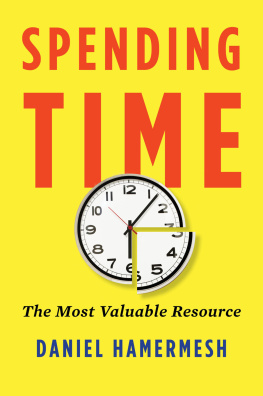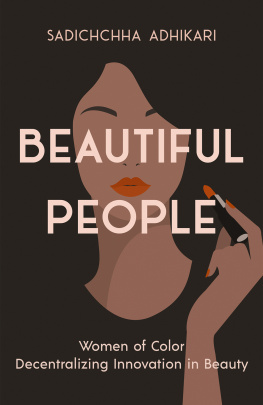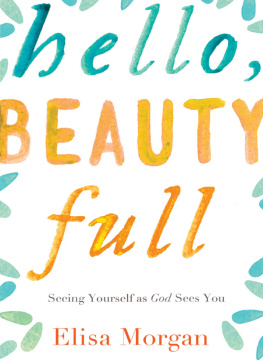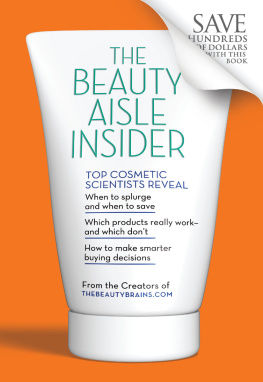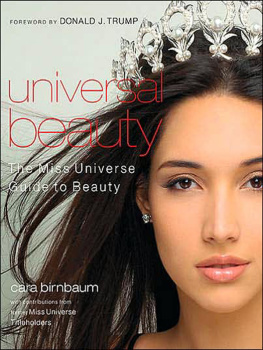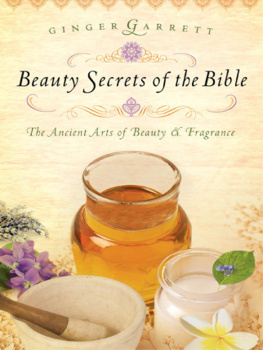BEAUTY PAYS
DANIEL S. HAMERMESH
BEAUTY
PAYS
Why Attractive People
Are More Successful

Copyright 2011 by Daniel S. Hamermesh
Requests for permission to reproduce material
from this work should be sent to Permissions,
Princeton University Press
Published by Princeton University Press, 41
William Street, Princeton, New Jersey 08540
In the United Kingdom: Princeton University
Press, 6 Oxford Street, Woodstock, Oxfordshire
OX20 1TW
press.princeton.edu
All Rights Reserved
Library of Congress Cataloging-in-Publication
Data
Hamermesh, Daniel S.
Beauty pays : why attractive people are more
successful / Daniel S. Hamermesh.
p. cm.
Includes bibliographical references and index.
ISBN 978-0-691-14046-9 (hardcover)
1. Success in business. 2. Success. 3. Beauty,
Personal. I. Title.
HF5386.H243 2010
650.1dc22
2011013548
British Library Cataloging-in-Publication Data
is available
This book has been composed in Bauer Bodoni
and Garamond Premier Pro
Printed on acid-free paper.
Printed in the United States of America
10 9 8 7 6 5 4 3 2 1
CONTENTS
PREFACE
I got involved in studying the economics of beauty in a curious way. Early in 1993, I noticed that the data I was using on another research project included interviewers ratings of the beauty of the surveys respondents. I thought it would be fun to think about how beauty affects earnings and labor markets generally. The result was the first of the six refereed scholarly papers that I have published on this topic. A serious difficulty for me in this line of research has been that many economists find work on this topic, and even this kind of topic, to be beyond the scope of economic research. That kind of narrow-mindedness has conspired in the past to make economics appear boring in the eyes of many non-economists. As the work of Gary Becker, Steve Levitt, and, to a much lesser extent, my own has shown, economic research can be anything but boring. Many of the topics that we work on, and on which serious economic thinking can shed light, are fun and involve issues that could not be understood using the methods of any other scholarly discipline.
I began working nearly twenty years ago to discover what economics has to say on the topic of physical appearance. Many of the themes that are discussed in this book were first tested out in scholarly papers, and later became part of an ever-evolving lecture that I have delivered in various venues, entitled The Economics of Beauty. In developing the scholarly papers and in presenting the public lecture, I have received numerous comments from listeners, both other economists and the smart people who happened to show up to hear me. Large numbers of the comments have been useful; and even where they have not been, they have still been fun to receive. Perhaps the most amusing was a comment from a distinguished economist who asked, Are you sure that beauty isnt just correlated with early-birdness [a term whose meaning was initially completely opaque to me and most of the audience, but presumably alludes to early birds catching worms]?
I was not the first to look at the relationship between beauty and economic outcomesthats an old topic. I was, however, the first to examine it using a nationally representative sample of adults, and to do so in the context of economic models of the determination of earnings. My subsequent work broadened this approach into a research agenda that inquired into the Why? of this relationship and, more generally, into the meaning of discrimination as perhaps represented by the economic roles of beauty and ugliness. As one former student of mine put it, all of this has led to the development of a subfield that one might dub pulchronomics.
Many of my colleagues have contributed indirectly to this book. The most important have been the coauthors who have worked on beauty topics with me, including the students Ciska Bosman and Amy Parker, and my friends Xin Meng and Junsen Zhang. Crucial throughout have been Jeff Biddle and Gerard Pfann, who have become the most frequent coauthors in my now forty-three-year professional career. Seminar attendees at a very large number of universities, and especially at the National Bureau of Economic Research Labor Studies meetings, have made comments that have improved some of the papers I discuss in this volume. My labor economist colleagues Gerald Oettinger and Steve Trejo were also very generous with their time to listen to my ideas, as was Melinda Moore.
The authors of all the economic studies that have been published since the early 1990s have also, without intending it, contributed substantially to the work. Three reviewers of an earlier draft of the manuscript made cogent comments that greatly improved the presentation. Particular contributions to the book were also made by Judith Langlois, Vice Provost at the University of Texas at Austin, and probably the leading expert on the perception of beauty by infants. My law professor brother made helpful comments on , and at age ninety-one, my late mother, Madeline Hamermesh, solved my search for a good title. Her contribution is the first thing that the reader sees.
Using the 5 to 1 scale that I discuss in , I am a 3. In my eyes, my wife of forty-four years, Frances W. Hamermesh, is a 5. (I did, however, make the mistake of commenting in a widely circulated newspaper interview that she was not Isabella Rossellini, nor was I Alec Baldwin.) She has encouraged my work on this topic over nearly two decades. Still more important, she made it clear when it was time to stop producing new work and make the entire oeuvre accessible outside the narrow economics specialty. Her comments on all drafts of the manuscript improved it tremendously. I dedicate this book to this amazing woman:
She walks in beauty, like the night
Of cloudless climes and starry skies:
And all thats best of dark and bright
Meet in her aspect and her eyes:
The smiles that win, the tints that glow,
But tell of days in goodness spent,
A mind at peace with all below,
A heart whose love is innocent!
She Walks in Beauty, George Gordon, Lord Byron
Daniel S. Hamermesh, Austin, Texas November 2010
PART I
Background
to Beauty
CHAPTER 1
The Economics of Beauty
Modern man is obsessed with beauty. From the day we are old enough to recognize our faces in a mirror until well after senility sets in, we are concerned with our looks. A six-year-old girl wants to have clothes like those of her princess dolls; a pre-teenage boy may insist on a haircut in the latest style (just as I insisted on my crew cut in 1955); twenty-somethings primp at length before a Saturday night out. Even after our looks, self-presentation, and other characteristics have landed us a mate, we still devote time and money to dyeing our hair, obtaining hair transplants, using cosmetics, obtaining pedicures and manicures, and dressing in the clothes that we spent substantial amounts of time shopping for and eventually buying. Most days we carefully select the right outfits from our wardrobes and groom ourselves thoroughly.
The average American husband spends thirty-two minutes on a typical day washing, dressing, and grooming, while the average American wife spends forty-four minutes. There is no age limit for vanity: Among single American women age seventy and older, for some of whom you might think that physical limitations would reduce the possibility of spending time on Many assisted living facilities and nursing homes even offer on-site beauty salons. For most Americans, grooming is an activity in which they are willing to invest substantial chunks of their time.
Next page

